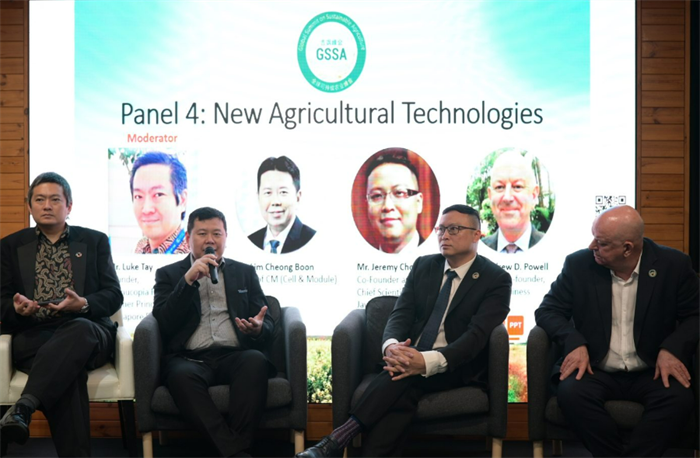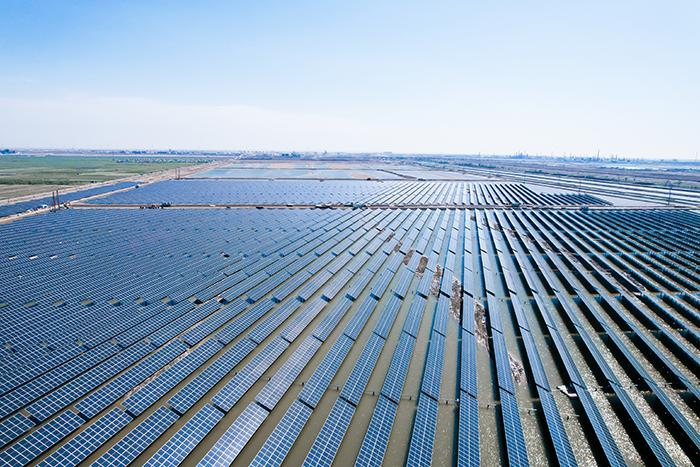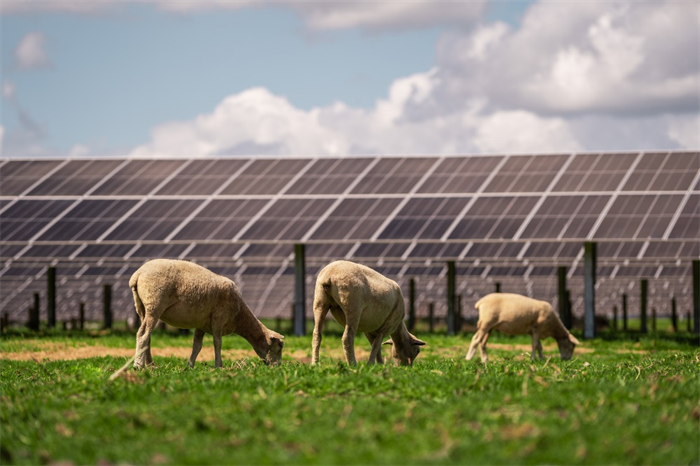Harnessing Sunlight for Agriculture and Solar Power: The Agrivoltaic Solution
- 24/07/09
- Energy Storage
In the race towards a net-zero future, agrivoltaics is an emerging trend – combining one of the oldest industries in the world, with one of the fastest-growing renewable energy sources. Imagine large fields where crops, sheep and PV modules coexist, doubling the land's productivity while slashing carbon footprints. This innovative approach, which combines agriculture and PV and tracker systems, is revolutionizing the way we think about farming and energy. As a leader in solar technology, Trinasolar is committed to supporting the growth of agrivoltaics, paving the way for a greener, more sustainable future.
At the 2024 Global Summit on Sustainable Agriculture held on 1 July in Singapore, Trinasolar Asia Pacific's Head of Cell and Module Product, Lim Cheong Boon, was joined by Luke Tay, Founder of Cornucopia FutureScapes, Jeremy Choong, Co-founder and Chief Scientist of JayVoxx Holdings, and Dr. Andrew D. Powell, CEO and Co-founder of Asia BioBusiness to discuss new technologies in agriculture.

Caption: Discussion on New Agricultural Technologies at the Global Summit on Sustainable Agriculture
Here are the key highlights from the session:
What is Agrivoltaics?
Agrivoltaics involves the simultaneous use of land for both solar power generation and agriculture. PV modules are mounted on trackers and installed above crops and livestock, allowing sunlight to be harnessed for energy while also providing shade and a controlled environment for plant growth or grazing of sheep. This dual-purpose use of land maximizes its productivity and offers numerous benefits for farmers and the environment.
Sustainable Agriculture: Benefits of Agrivoltaics
Enhanced Crop Yield and Renewable Energy Generation
PV modules provide shade, reducing heat stress on crops and livestock. This can lead to higher yields and better-quality produce, especially in regions with intense sunlight. For instance, the Kohira Solar Farm by Lodestone Energy in New Zealand uses Trinasolar bifacial modules on Vanguard 2P trackers, optimized by a smart algorithm. These trackers ensure maximum energy generation while allowing space for agricultural activities, like sheep grazing beneath the panels. This is a win-win situation as the sheep can graze on quality feed while managing vegetation growth. This helps developers save on maintenance costs, while farmers reduce their water use, with animals using the shade to stay cool during hot weather, meaning they drink less.
In addition, the shade provided by modules reduces water evaporation, enhancing water use efficiency. This is particularly beneficial in arid regions where water conservation is critical.
Income and Energy-Use Offsets from Solar Energy Production
Agrivoltaic systems generate renewable energy, reducing reliance on fossil fuels and lowering greenhouse gas emissions. This clean energy can power irrigation systems, farm equipment, and other agricultural needs, promoting energy self-sufficiency for farmers. This can be further expanded in future when there's electrical tractors to replace diesel engines. Overall, this can reduce the carbon footprint of the industry.

Caption: Agrivoltaics ushering a new era for Cangzhou's traditional fishing industry
By producing both crops and energy, farmers can diversify their income streams. The initial investment in agrivoltaic systems can be offset by the savings on energy costs and the potential revenue from selling surplus energy back to the grid. For example, Cangzhou City, renowned for its fishing industry, has installed 70MW worth of Trinasolar Vertex modules across 321 acres of fishponds, and it's expected to generate 128 GWh of green electricity annually. The project not only reduces CO2 emissions by approximately 107,000 tons per year but also optimizes the local energy structure. The grid-connected fishery PV project contributes to local hydroponic agriculture and minimizes water evaporation and temperature-related aquatic losses, providing an economic and environmental boost.
Solar Success for Agrivoltaics – Solar + Tracker Integrated Solutions

Caption: Sheep grazing beneath Trinasolar's Vertex N modules and TrinaTracker Vanguard 2P at Kohira Solar Farm in New Zealand
Trinasolar is at the forefront of promoting and implementing agrivoltaic solutions. Our advanced module, tracker and storage solutions can enable seamless integration with agricultural practices, offering tailored solutions that meet the specific needs of different crops and livestock.
For instance, seaside or wetlands applications for fisheries or mudflats are challenging sites due to salinity, moisture and heat. Durable and reliable are crucial for withstanding site conditions. Modules that fail incur replacement costs, cause system downtime, and reduce renewable energy production. Recognizing this, Trinasolar's PV products go through a series of stringent tests designed to simulate the harshest conditions solar panels might face. These tests include thermal cycling, damp heat, mechanical load, and hail resistance by third-party organizations such as RETC and PVEL.
Secondly, modules mounted on trackers with smart tracking solutions boost energy efficiency by following the sun's path throughout the day, leading to increased energy production. AI-powered systems like the TrinaTracker's Smart Control System can adjust the tracker based on real-time meteorological data to mitigate risks posed by poor weather, which could be used to influence the module positions after rainfall. For example, the module can be moved into a vertical position to allow crop leaves to dry more quickly. Additionally, elevated panels offer easier access to crops, livestock, and necessary farming equipment or personnel, ensuring more efficient land use.
Looking Ahead: The Future of Agrivoltaics
AI Integration
By integrating artificial intelligence with PV systems, we can further enhance agricultural efficiency. AI-powered drones, for example, can monitor crop health and optimize irrigation, leading to increased yields and reduced costs. AI implementation in agriculture has shown promising results, with projections of up to a 40% increase in yield and a 70% decrease in costs for certain crops.
Moving Together Towards Sustainable Agriculture
The adoption of agrivoltaics is not without its challenges. Technology often advances faster than policies and regulations, creating a "pacing problem." To address this, it is crucial for policymakers to proactively develop regulations that facilitate the adoption of new technologies while ensuring safety and sustainability. Moreover, balancing the needs of smallholder farmers with technological advancements requires a deep understanding of their concerns and priorities. Effective communication and support systems are essential to help farmers transition smoothly to agrivoltaic practices.
In conclusion, agrivoltaics represents a promising frontier in sustainable agriculture and renewable energy. By combining these two vital sectors, we can optimize land use, enhance food security, and combat climate change. Trinasolar, guided by its mission of "Solar Energy for All," remains unwavering in its commitment to providing tailor-made smart energy solutions for agrivoltaics.
Trinasolar is committed to driving this innovation forward, supporting farmers and communities in their journey towards a more sustainable and prosperous future. Together, we can cultivate a brighter, greener future for generations to come.
Relevant Topics
Smart Energy Solutions
delivered straight to your inbox

More Events

